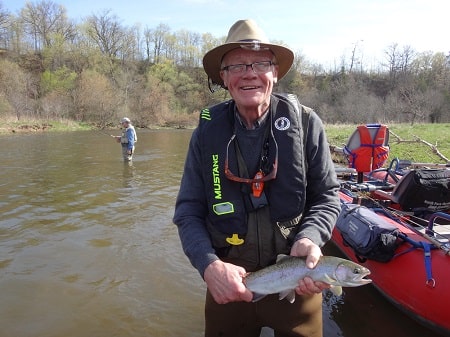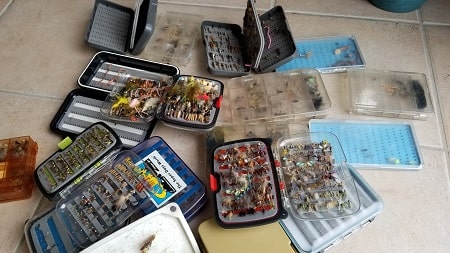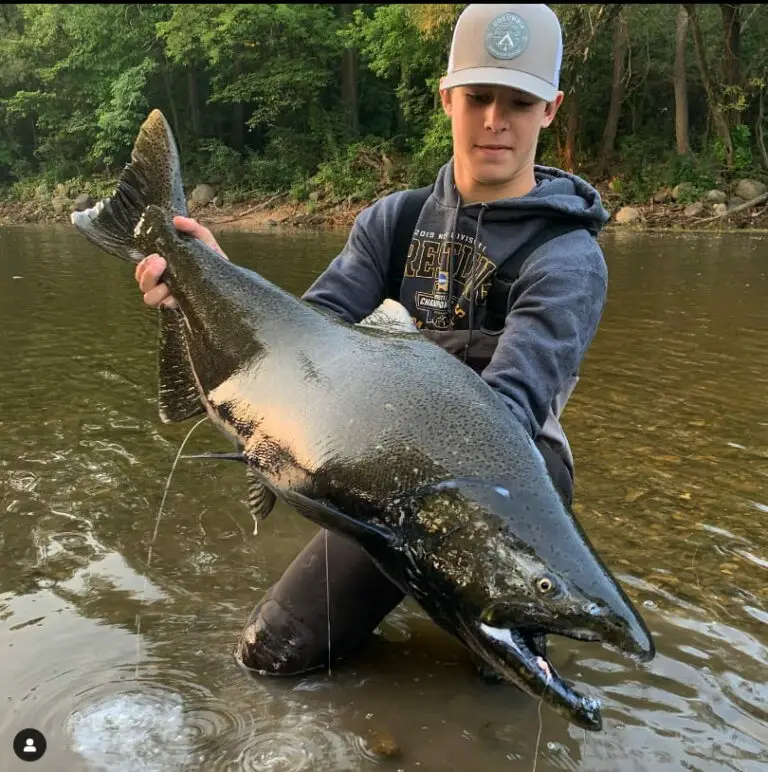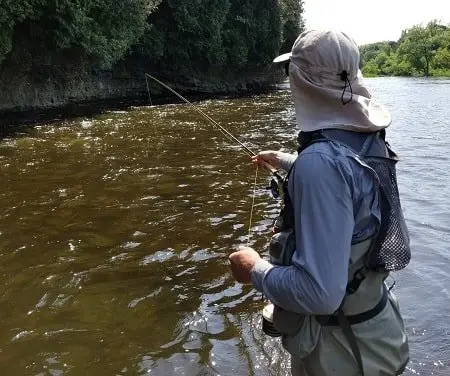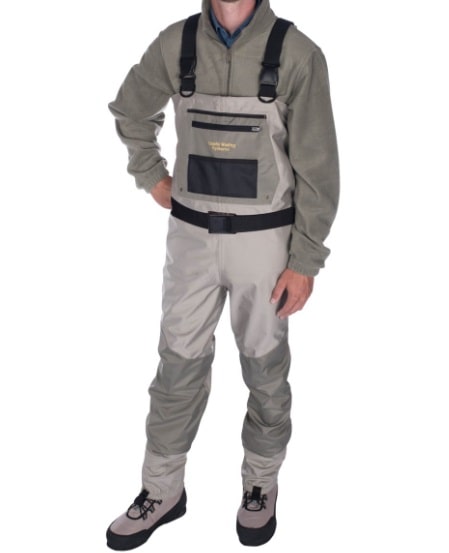11 Best Fish Finders: Review And Buyers Guide
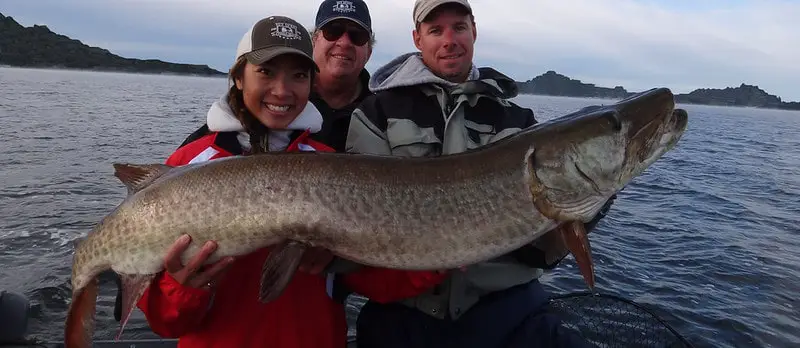
I guided out of a boat for over 17 years for musky, bass, walleye, steelhead, and salmon, and I was often in treacherous waters full of rocks. I’ve often said that to keep me and my clients safe, to protect my motor and prop, and to catch more fish, my GPS fishfinder combo was the key to all of it. It’s invaluable.
In fact, when it comes to catching fish, if I had to choose between giving up my 200hp Mercury motor or my fishfinder/GPS unit, I’d choose to keep my fishfinder every time.
My best guess is that my fishfinder and GPS combo accounted for 60% to 70% more fish in my boat every year. Provided you actually know how to use it properly.
During my time as a guide, I’d tested out more than two dozen fishfinders.
At times, I’d even have 3 different ones on my boat. I also sold fish finders in my tackle store, so testing gave me firsthand knowledge of which ones were the best to sell and recommend.
There are about 100 fish finders to choose from, and with so many options, it can be confusing. You might be surprised by which ones I and other guides use.
This article narrows down the 11 best sonar units, from $100 to over $6000, so you can easily find the one most suitable for your needs and within your budget.
Best Fish Finders For Fishing
If you are fishing from a boat, whether you think you need a fish finder with GPS mapping or not, I highly recommend it.
And considering most units now come with GPS and the price for them is about the same as ones without, it’s a great option for many reasons.
If you are not sure which fish finder is best for you, see below my list of fish finders for my tips on choosing a fish finder, what features to consider, and some common questions and answers.
1. Garmin ECHOMAP Ultra 2 – BEST OVERALL
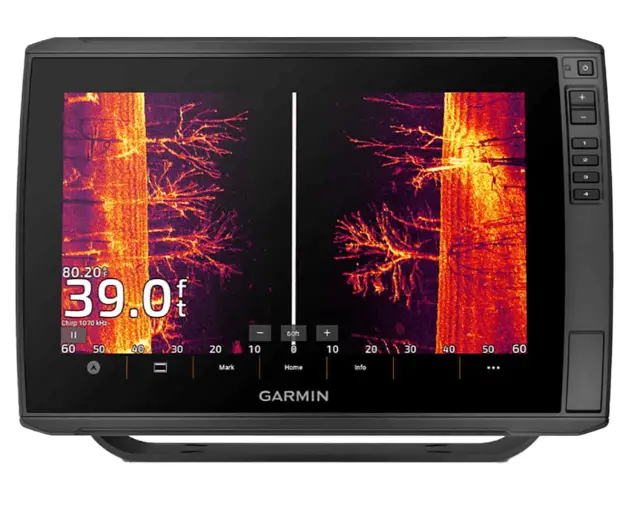
Garmin’s Echomap Ultra 2 comes with maps of inland lakes and coastal waters that support auto-guidance technology for using a trolling motor to fish productive waters.
The ECHOMAP 2 comes in four screen sizes from 9 inch to 16 inch, and the price ranges from $2100 to $4700 depending on the size of the unit.
There are so many features combined with a touchscreen that is easy to read in bright sunlight.
It also get great reviews everywhere.
If this units fits you’re budget, it would be my first choice for a high end unit.
See all the details for the Garmin ECHOMAP Ultra 2 and pricing at this link.
2. Lowrance HDS PRO – Best Under $2000
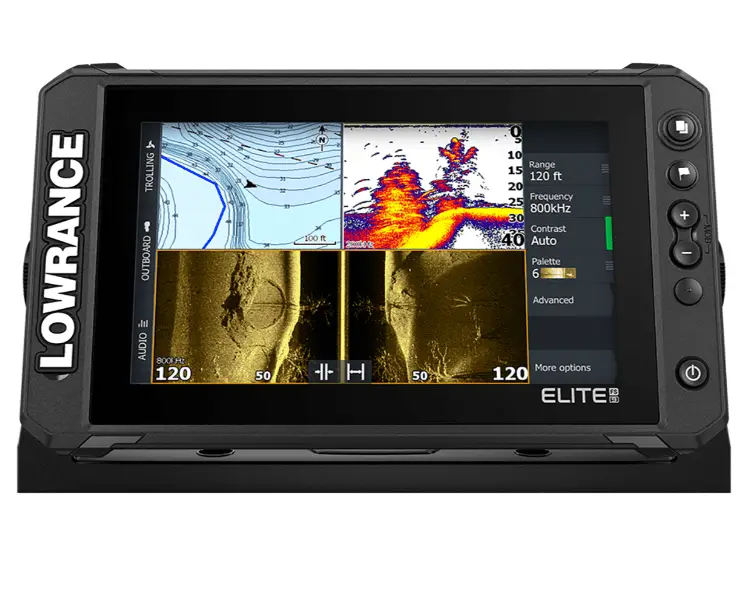
There are two units I would buy in the price range between $1000 and under $2000.
The first comes in at just under $2000 and is the Lowrance HDS Pro 9.
With it’s 9 inch HD screen, GPS, and a ton of features, this is a great unit for any angler. Yes, I’ve had this unit on my boat and it’s damn good, and easy to use.
It also gets great reviews.
3. Garmin ECHOMAP UHD2 – Best Under $1500
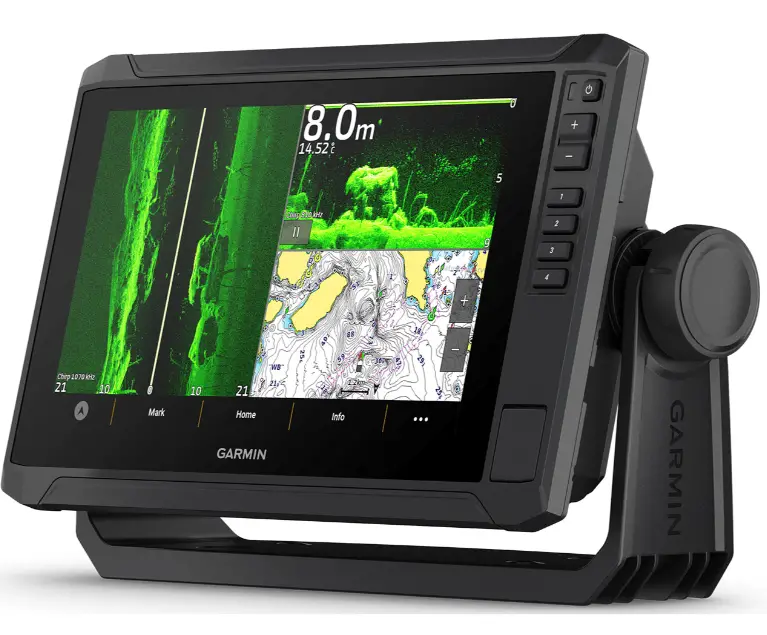
A great second choice that comes in just under $1400 is the Garmin ECHOMAP UHD2. At this price point, you can’t beat this unit with all its features, and to back up that statement, it gets a lot of great reviews.
Just make sure you get the right mapping unit for your area.
4. Lowrance Elite FS – Best Under $1000

I’m not going to deny it. I’ve used Lowrance and enjoyed their fish finders more than any other brand.
But you don’t have to take my word for it. The Lowrance Elite FS unit gets great reviews becuase everyone else loves it too.
So, if your budget is $700 to $1000, the 7-inch or 9-inch Lowrance Elite FS is a great fish finder.
From a HD screen that works great in high-sun, an accurate GPS that has never let me down, and got home home safe even in the thickest fog, to a ton of features, and a good price, this unit is fantastic for the price.
Check out all the details below.
5. Hummingbird Helix 7 – Under $600
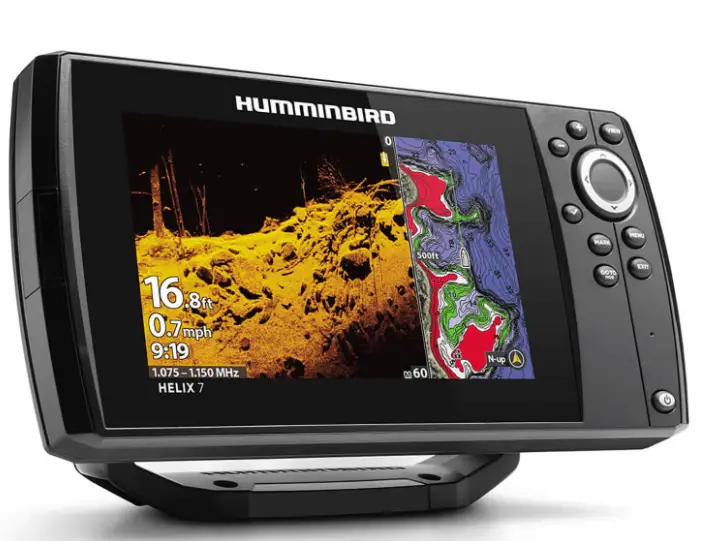
If you are looking for a great 7 inch screen under $600, one that gets great reviews and has amazing detaIl, you should consider the Hummingbird Helix 7.
It has built in GPS Humminbird Basemap, that covers more than 10,000 lakes and coastal areas in the U.S.A.
It has a user-friendly menu system and a ton of great features that you can see by clicking the button below.
6. Garmin STRIKER Vivid – Under $500
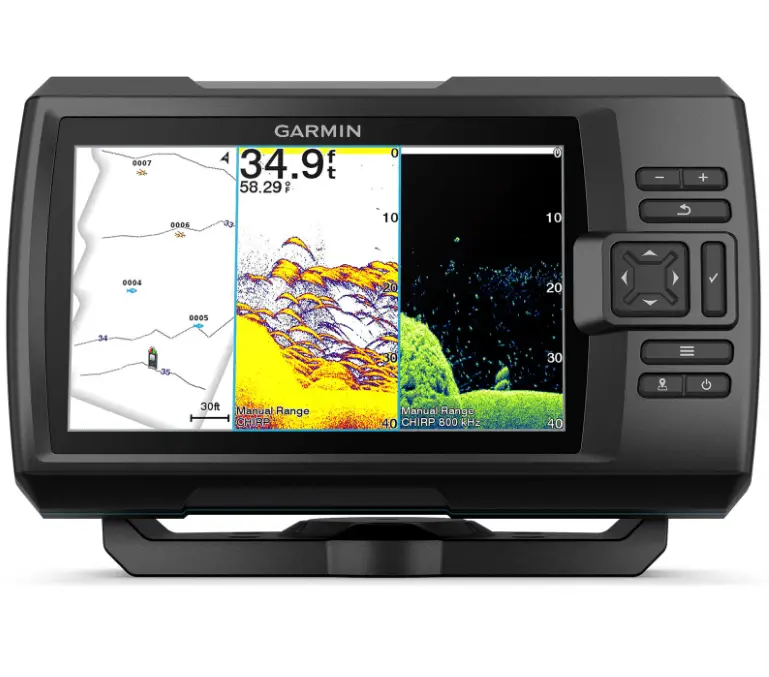
On a budget but still want a fantastic sonar and GPS combo with a 7 inch screen? Well, this one I’ve had on the front of my boat, so I can honestly say, this is my first choice in this price range.
Last I checked, it’s around $420 which is amazing considering it comes with a great 7-inch screen and a ton of features that you can see below.
You can get the 5 inch for under $300
7. Hummingbird Helix 5 – Under $300
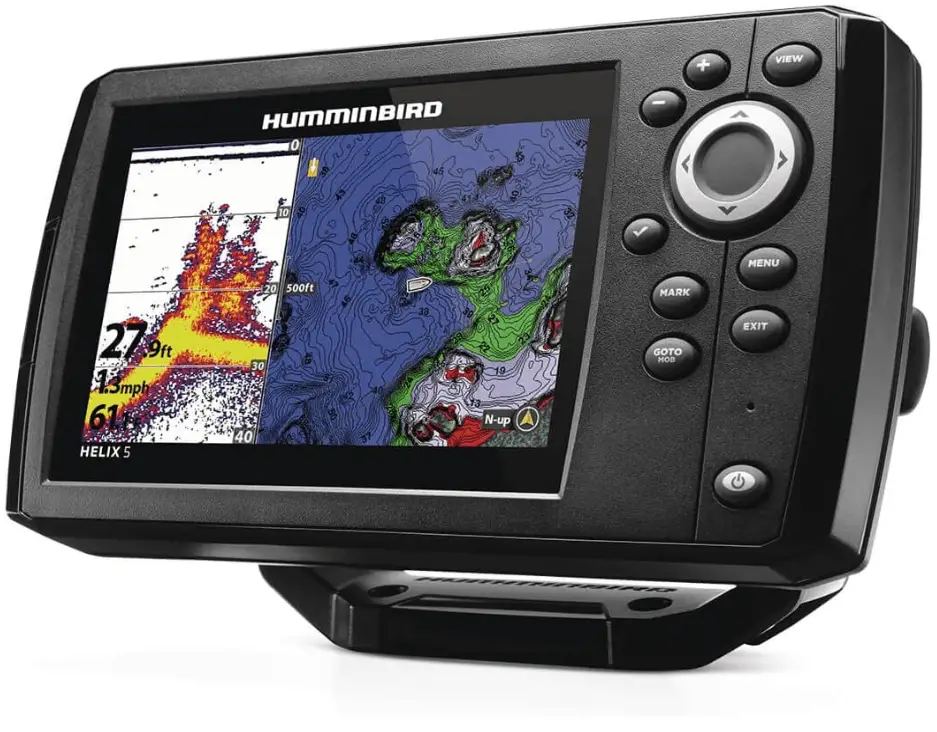
I mentions above how good the Helix 7 is, but if your budget is under $300, you’re not going to find a 7-inch screen. So, the best fish finder under $300 is the Hummingbird Helix 5 with the 5 inch screen and the many great fetures of the 7 inch.
Theres a few different models, but, the best is the Helix 5 CHIRP, which if on sale comes in just under $300. The link below is a unit that is or was under $300 at the time of this publishing.
Best Side Imaging or Side Scan Fish Finder
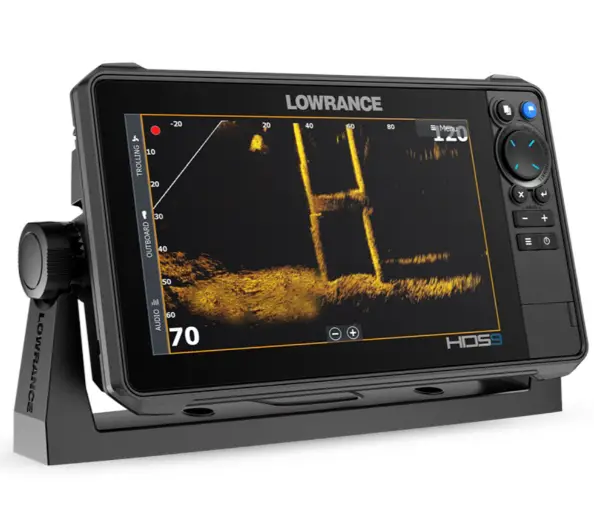
There isn’t just one best side imaging fish finders, there are 3 because nto everyone is in the same budget.
My top 3 picks are:
- Lowrance HDS PRO 9 – Around $1800.00
- Humminbird Helix 7 Chirp MSI – Around $950
- Garmin STRIKER Vivid 7sv – Around $520
11. Garmin Striker 4 – $129 – Best for Canoe and Kayak
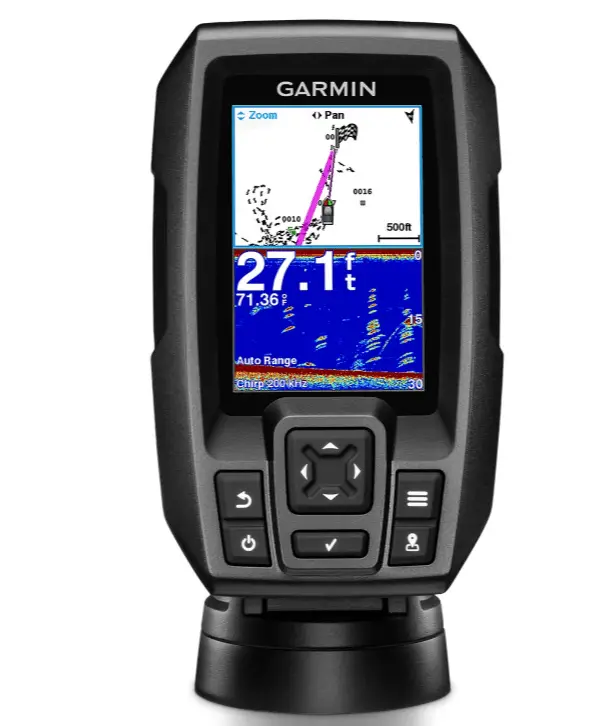
When canoeing or kayak fishing, you need a relatively light and portable fish finder and this one is the best.
The Striker 4 is a perfect solution that combines a GPS plotter and CHIRP sonar in a hand-sized unit with a 3.5-inch color LCD screen.
Simple pushbutton controls enable you to scroll, mark hotspots, and review data while using the kayak fish finder on lakes, rivers, or near-shore coastal waters.
Check out the huge list of features and the price:
About Fish Finders
The fish finder has come a long way since Japan’s Furuno brothers first designed a device to detect fish in 1948, and Darrell Lowrance turned the idea into a commercially viable fish finder in 1957.
Lowrance Electronics was the first commercially successful maker of the fish finder, but there are many companies making many types of fish finders today.
Types of Fish Finders
In their most basic forms, fish finders fall into one of three categories. Those are standalone, combination, and network fish finders. A standalone fish finder only scans for fish and does nothing else. They are effective, affordable, and usually have the largest imaging screens.
A combination fish finder locates fish and offers chart plotting capability via GPS technology. A network fish finder uses a variety of data sources, including GPS, Wi-Fi, and satellite radio, to provide a wide
You can also use one of 13 types of fish finders that use one of six different types of sonar. Some might offer two or more types of sonar, such as 2D, down-imaging sonar, or side-scanning sonar. Those three types are what most fish finders use to locate fish and structure.
Other types of sonar used are live, 360 imaging, and CHIRP. Each type has distinct advantages and disadvantages, but they all help to increase the odds of catching fish.
How to Choose the Best Fish Finder
Determining the best fish finder for your needs starts with determining your budget and the type of fishing that you would do with it.
If you are a charter boat captain, you could spend thousands of dollars on the best fish finder that helps you increase the odds for your passengers to catch fish. Those who mostly fish local lakes in smaller boats likely would find that an entry-level fish finder with an accessible price point would work well.
You’ll want to look at features like CHIRP, down-imaging, and side-imaging sonar systems for finding schools of fish. You should also consider some of the following factors to better know which fish finder would be the best overall.
Factors to Consider When Buying a Fish Finder
Examining these seven common factors can help you identify the most compatible fish finders for your purposes. You should look for the following marine electronics features to find the best.
- Power — Fish finders usually need an external power source from a 12-volt marine-grade battery. Some portable models might have internal rechargeable batteries or accept disposable batteries to power them.
- Frequency — Low-frequency sonar systems of about 50 kHz give you a wide range of the waters below, while higher-frequency sonar systems of about 200 kHz to 800 kHz are better for targeting schools of fish and acting as a depth finder.
- Screen Resolution — Better resolution makes it easier to read the screen and easy to navigate shallow water while using a trolling motor with your fish finder.
- Transducer — The transducer is what sends the sonar signal that makes a fishfinder work. It might be fixed to the boat’s hull or placed in the water when using a portable fish finder.
- GPS — GPS tracking enables more advanced fish-finding equipment to follow charted courses and show pre-made maps of the lake bottoms and coastal areas.
- Networking — Networking combines multiple sources, like Wi-Fi, satellite signals, and GPS, to create virtual maps of the waters you are fishing, so you can make sure you are where you need to be while fishing.
- Trolling or Not: If you are only trolling, you probably do not need side imaging. However, it won’t hurt.
What is a Fish Finder?
Fish finders use sonar waves to locate fish and underwater structures that hold them. It’s the same technology that the U.S. Navy used to help win World War II, and can help you win the battle with big fish.
Active imaging will show you where they are and in which direction they are moving, so you have a better chance of catching fish.
How Does a Fish Finder Work?
The majority of fish finders have two basic components that make them work and help you catch more fish. One is a transducer that you submerge to send sonar waves that locate fish. The other is an LCD screen that shows you what the fish-finding transducer has located, how deep they are, and how many are within the sonar range.
Why Do You Need a Fish Finder?
Anyone who wants to catch fish needs one of the best fish finders to find the fish and spend more time catching them than searching for them. A fish finder finds the fish and tells you how deep and about how many are down there. Some fish finders even tell you which species it has located so you can target specific ones.
Additional Considerations
- Lowrance Elite FS 7 – Listed As Best Pick on Amazon.com
- LUCKY Portable Sonar Fish Finder – Best Portable Fish Finder/Depth Finder
- Deeper PRO Smart Sonar Castable – Best Portable and Castable Fish Finder
The Best Fish Finders Q&A
If you have a question or comment on the best fish finders, let me know in the comments section below.
Tight Lines
Graham
Sources:

